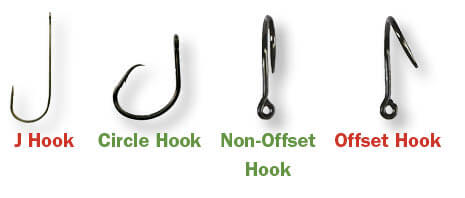Sea Turtle Incidental Capture Intake Form
Recreational Angler Survey of Sea Turtle Interactions
6. STICF instructions_6-2018
Sea Turtle Incidental Capture Intake Form
OMB: 0648-0774
November 2017 THIS IS A VOLUNTARY SURVEY Page 1 of 2
Sea Turtle Hook & Line Incidental Capture Intake Form
Introduction: All sea turtles in United States waters are listed as threatened or endangered under the Endangered Species Act (ESA). When sea turtle distribution overlaps with commercial and recreational fishing effort, sea turtles may be accidentally captured in the fishing gear. For commercial fisheries, observers are often placed on vessels to better understand these interactions. These observations provide insight into how and why these interactions occur and the impact of the interactions on sea turtle populations. In contrast, recreational fishing often occurs from shore, piers, and private vessels making traditional observer coverage challenging. Therefore, alternative data collection methods must be considered. NOAA Fisheries will use this information to gain similar insights into recreational fishing interactions and impacts. Pier is used as a general term, and the form can be used for recreational fishing interactions on any fishing structure (e.g., jetty, pier, boat, shore).
Angler Interview: Questions 1 – 3 should be asked of the angler by the sea turtle stranding responder. If the angler is not available, please answer as many questions as possible.
Where was angler fishing? Circle location from choices given. If possible, identify the location on the pier where the capture occurred. Choose P) Pier if that information is not available.
What was angler fishing for? Select up to two target species. If angler names >2 species, choose: A) Anything.
Bait used: Circle bait type used. If using whole or cut fish circle appropriate choice, record species if possible.
Gear Information: Questions 4 – 6 may be asked of the angler by the sea turtle stranding responder or recorded at the rehabilitation facility. If possible, try and collect the fishing gear. If the angler will not provide the gear, record the information on site. If the angler is not available, please answer as many questions as possible. Please use a ruler to measure the hook.

H

ook type used: Identify type of hook used based on examples and descriptions below.
J-hook: the shaft is straight and resembles the letter “J” and the point and barb do not point toward the shaft.
Circle hook: sharply curved back in a circular shape with the point is pointed toward the shaft.
Kahle hook: curved back in an oval shape with the hook point is pointed toward the hook eye; distance between the point and the shaft is much greater than on a circle hook.
Jig hook: bent on the shank before the eye about 60-90°, often used with artificial lures.
Treble hook: consists of three hooks with a single eye, often used with artificial lures.
 4a)
Also select if the hook
is offset, non-offset or if it does not apply.
The degree of offset can vary.
4a)
Also select if the hook
is offset, non-offset or if it does not apply.
The degree of offset can vary.
Hook size: Using a ruler, measure the total length from the top of the eye to the bottom of the hook, as shown on page 1.
If the hook is a circle hook gap, what is the gap? Gape is measured as the tip of the point to the inside of the shaft, as shown on page 1.
Interaction Information: Questions 7 – 10 may be recorded by the sea turtle stranding responder and/or the rehabilitation facility staff depending on the type of hooking and gear location. If possible, please take photos of the gear interaction before removing the gear.
Interaction type: select the appropriate type of interaction between the sea turtle and the fishing gear.
Hook/Gear Location: select the answer that describes the location of the gear. If the hook is NOT visible inside the mouth it is considered shallowed. If the sea turtle is not hooked when the stranding responder arrives at the site and the angler does not know where it was hooked, select M) Mouth.
If turtle was released by the angler, was the hook and all line removed? Select answer.
9a) If no, amount of line remaining on turtle (inches) ______. Ask angler how much line was still attached to the hook when the line was cut.
Were any other hooks observed (either on radiograph or visually)? If additional hooks are observed, please answer the questions describing hook type, size and location for each additional hook in the animal.
*If possible, please take photos of the gear interaction before removing the gear. Please collect the fishing gear and contact your State Coordinator for instructions on disposition of gear. Submit this form along with your STSSN form to your State Coordinator.
| File Type | application/vnd.openxmlformats-officedocument.wordprocessingml.document |
| Author | Melissa Cook |
| File Modified | 0000-00-00 |
| File Created | 2021-01-20 |
© 2026 OMB.report | Privacy Policy